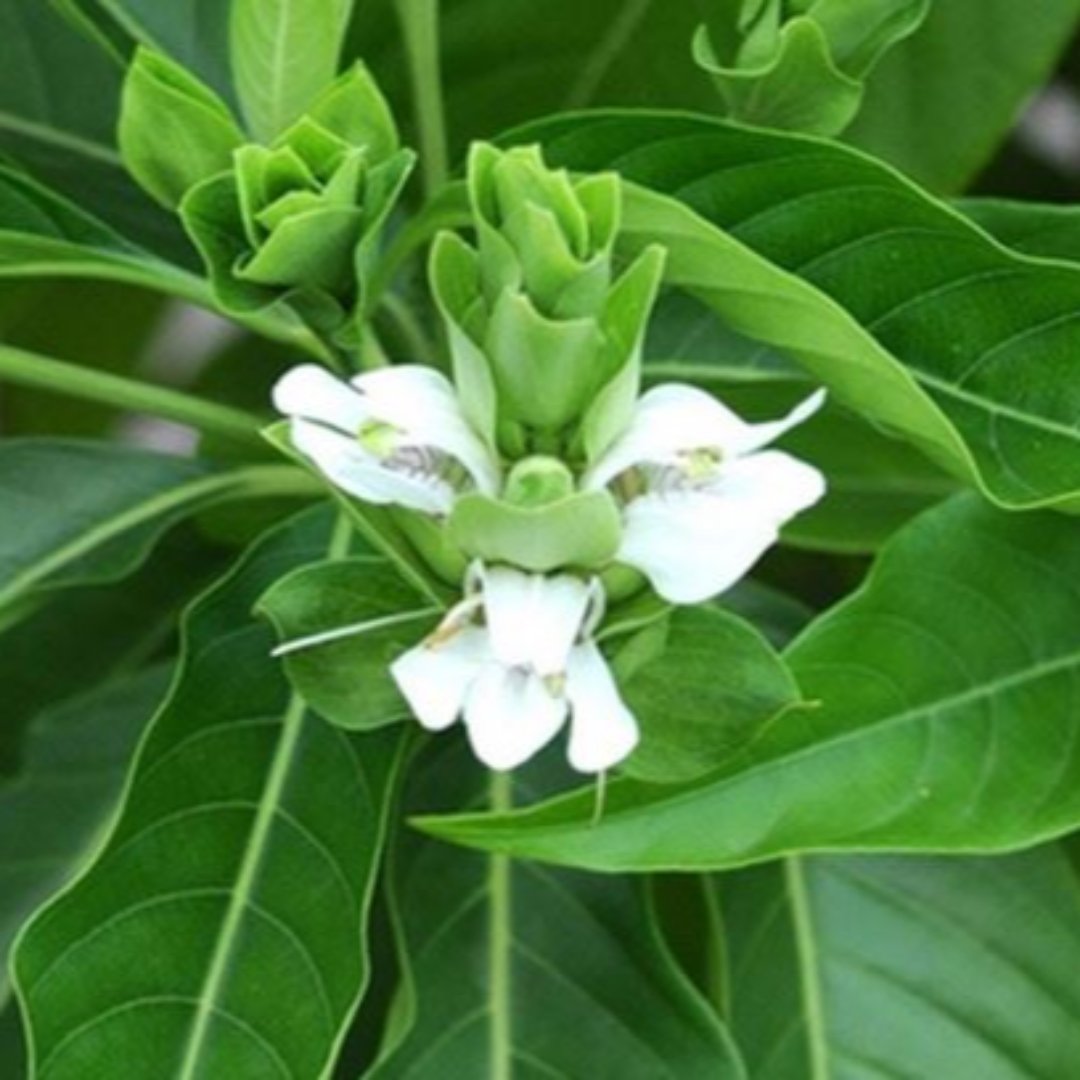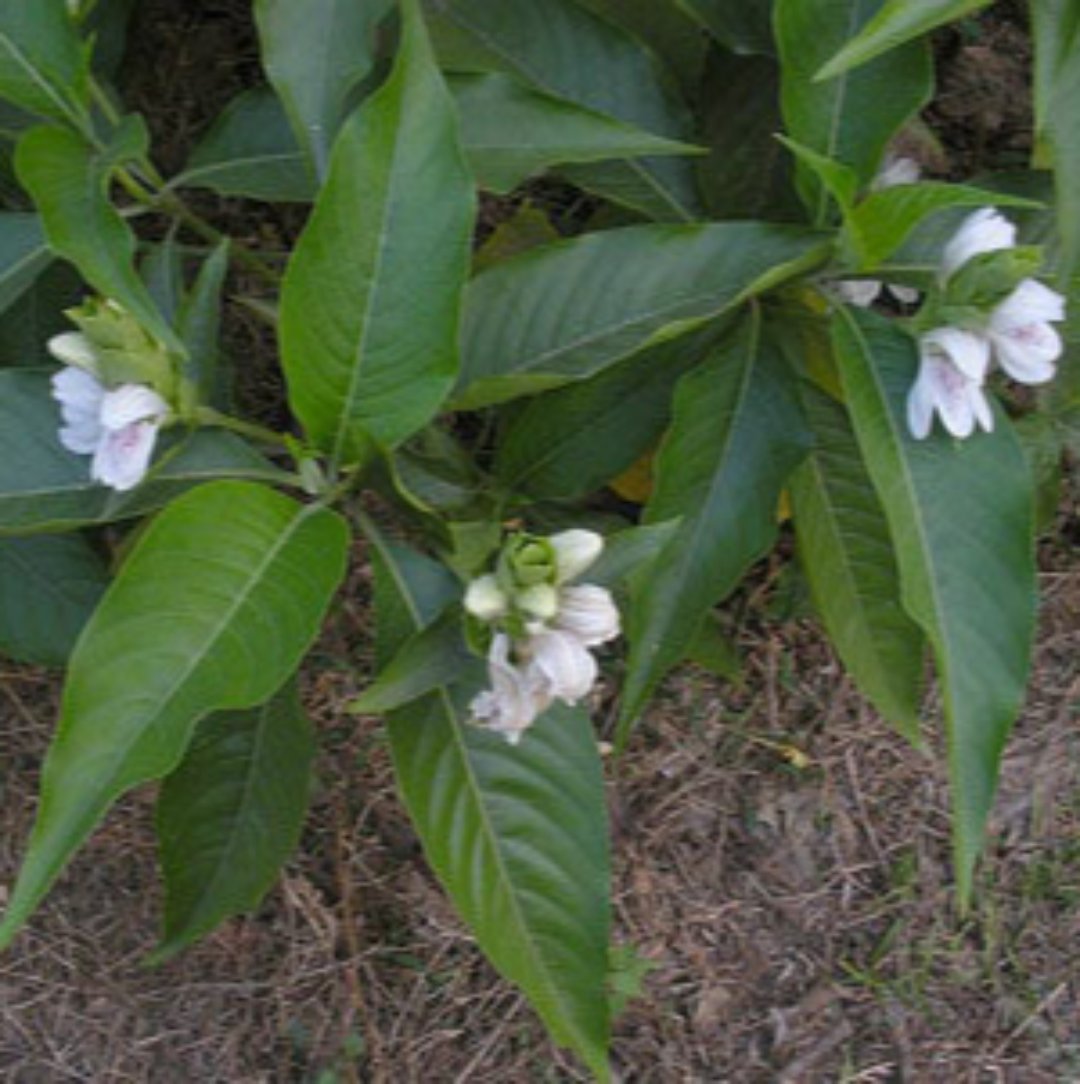

Adusi Plant Adhatoda Vasica Adulsa Medicinal Plant
Rs. 299.00
Guaranteed Safe Checkout
Green Paradise Offers Healthy Adusi Plant
About Adusi Plant
Adusi Plant, commonly known as Vasaka or Malabar nut, is a medicinal plant that belongs to the Acanthaceae family. It is native to the Indian subcontinent and can be found growing in various regions of India, Sri Lanka, Nepal, and Southeast Asia. The Adusi Plant has been valued for its therapeutic properties in traditional medicine for centuries.
Physical Description:
Adusi Plant is an evergreen shrub that typically grows to a height of 2 to 3 meters. The leaves are large, simple, and lance-shaped, with a smooth texture and a shiny surface. They are arranged oppositely along the stem and can reach up to 10 to 15 centimeters in length. The flowers are white with hints of purple and are arranged in dense, axillary spikes. The plant produces small, capsule-like fruits containing tiny seeds.
Medicinal Uses:
Various parts of the Adusi Plant , especially its leaves, are widely used in traditional medicine due to their medicinal properties. The plant contains several bioactive compounds, including alkaloids like vaccine, vasicinone, and azatadine, which contribute to its therapeutic effects. Some of the traditional uses of the Adusi Plant include:
Respiratory Health:
Vasaka is particularly well-known for its beneficial effects on respiratory issues. It is used to treat coughs, bronchitis, asthma, and other respiratory disorders. The alkaloids present in the plant help in dilating the bronchioles and reducing inflammation in the respiratory tract, thus easing breathing difficulties.
Expectorant:
The leaves of the Adusi Plant act as an expectorant, which means they help in expelling excessive mucus from the respiratory system. This property is beneficial in relieving congestion and promoting clearer breathing.
Anti-inflammatory:
The plant exhibits anti-inflammatory properties, which can be helpful in reducing inflammation in various parts of the body and alleviating associated symptoms.
Antimicrobial:
Vasaka has demonstrated antimicrobial activity against certain bacteria and fungi, which makes it useful in the treatment of infections.
Antioxidant:
The Adusi Plant contains antioxidants that protect the body's cells from oxidative damage, contributing to overall health and well-being.
Preparations and Dosage:
Adusi plants can be consumed in various forms, including fresh leaves, dried leaves, extracts, syrups, and herbal formulations. It is often prepared as a decoction or infusion by boiling the leaves in water. The traditional dosage depends on the specific condition being treated and the form of the preparation. However, it is essential to consult a qualified healthcare practitioner or an Ayurvedic specialist before using any herbal remedies to ensure appropriate dosage and safety.
It's important to note that while Adusi Plant has been used traditionally for various medicinal purposes, scientific research on its effectiveness and safety is ongoing. As with any herbal remedy, it is crucial to use it with caution and under proper guidance. If you have any health concerns, always consult a healthcare professional before using any herbal supplement or remedy.
Plant Specifications
| Plant Height | 20-30 cm |
*above specifications are indicative only. actual dimensions may vary by +-10%
| Common Name | Adulsa, Adhatoda, vasaka |
| Maximum Reachable Height | Up to 14 feet |
| Difficulty Level | Easy to grow |
Here are some of the names of Adusi Plant in different languages:
English: Malabar nut, Adulsa, Vasaka, Vasica
Hindi: अदुलसा (Adulsa)
Bengali: বাসক (Vasak)
Kannada: ಆಡುಲೆ (Adule)
Tamil: ஆடாதொடை (Adathodai)
Telugu: వాసకం (Vasakam)
Malayalam: ആടലോട (Adalota)
Marathi: अडूसा (Adusa)
Gujarati: અરડૂસો (Araduso)
Punjabi: ਅਰਡੂਸ (Aradus)
Urdu: اڈولسا (Adulsa)
Arabic: الوقوق (Al-Waqwaq)
Sanskrit: वासा (Vasa)
How To Grow Adusi Plant
Adusi Plant, commonly known as Vasaka or Malabar nut, is a medicinal plant with various therapeutic properties. It is relatively easy to grow and can be cultivated in both pots and gardens.
Here is a step-by-step guide to growing Adusi Plant,
Obtain Seeds or Cuttings:
You can start by obtaining seeds from a reputable nursery or garden center. Alternatively, you can take cuttings from a healthy Vasaka plant during the growing season.
Choose the Right Location:
Adusi Plant, prefers a sunny location with partial shade. It can also tolerate full sun but might need protection during hot summer afternoons.
Prepare the Soil:
Vasaka prefers well-draining soil rich in organic matter. You can prepare the soil by mixing garden soil with compost or well-rotted manure. The pH level should be slightly acidic to neutral (pH 6.0 to 7.5).
Planting:
If you are using seeds, sow them directly in the prepared soil at a depth of about 1/4 inch (0.6 cm) and cover them lightly with soil. If using cuttings, remove a healthy stem with a few leaves and plant it directly in the soil.
Watering:
Keep the soil consistently moist, but avoid waterlogging. Adusi Plant, prefers regular watering, especially during dry spells. However, make sure the soil has good drainage to prevent root rot.
Mulching:
Applying a layer of organic mulch around the plant can help retain soil moisture and suppress weed growth. Mulching also adds nutrients to the soil as it breaks down.
Fertilizing:
Fertilize the Vasaka plant with a balanced, water-soluble fertilizer once every two weeks during the growing season (spring and summer). You can reduce the frequency of fertilization during the winter.
Pruning:
Regular pruning will encourage bushier growth and more vigorous flowering. You can trim back the plant after the flowering season to maintain its shape.
Pest and Disease Control:
Adusi Plant is relatively resistant to pests and diseases. However, keep an eye out for common garden pests like aphids and mites. If necessary, use organic insecticidal soap or neem oil to control infestations.
Harvesting:
The plant typically blooms in late winter or early spring. You can harvest the leaves and sometimes the flowers for medicinal use once the plant is mature enough.
Medicinal Use:
Adusi Plant has various medicinal properties and is used in traditional medicine for respiratory conditions like asthma, bronchitis, and coughs. However, it's essential to consult with a qualified healthcare professional before using it for any medicinal purpose.
Remember that while Adusi Plant is generally safe, it's essential to follow proper cultivation and harvesting practices. If you're using it for medicinal purposes, seek advice from an expert to ensure the correct dosage and application.
Planting and Care
planting and caring for Adusi Plant here are some guidelines:
Planting:
Climate:
Adusi Plant thrives in a tropical to subtropical climate, preferring temperatures between 20°C to 35°C (68°F to 95°F). It may grow in a wide range of soil conditions, but favors well-drained soil.
Propagation:
The plant can be propagated through seeds or stem cuttings. Seeds should be sown in well-prepared soil, and stem cuttings should be taken from healthy, mature plants and placed in a rooting medium until they develop roots.
Spacing:
If you're planting multiple Vasaka plants, provide adequate space between each plant to allow proper growth and air circulation.
Caring:
Watering:
Keep the soil moist but not sopping wet. Water the factory regularly, especially during dry ages. Overwatering can cause root spoilage, so avoid it.
Sunlight:
Adusi Plant thrives in partial shade to full sunlight. Ensure the plant receives at least 4-6 hours of sunlight per day for optimal growth.
Fertilizing:
Use a balanced fertilizer or organic compost during the growing season (spring and summer) to encourage healthy growth and blooming. Follow the manufacturer's instructions for application.
Pruning:
Regularly prune the plant to remove dead or diseased leaves, spent flowers, and to shape the plant. Pruning also promotes bushier growth.
Pest and Disease Control:
Keep an eye out for common pests such as aphids, spider mites, and caterpillars. If you notice any infestations, treat the plant with suitable organic or chemical pesticides. Also, ensure good air circulation around the plant to prevent fungal diseases.
Mulching:
Apply a layer of organic mulch around the base of the plant to retain soil moisture, suppress weed growth, and provide nutrients as it breaks down.
Support:
Adusi plants can grow into a bushy shrubs. If needed, provide support to keep the plant upright.
Harvesting:
If you intend to use Adusi Plant for its medicinal properties, harvest the leaves when the plant reaches maturity. The leaves are typically collected, dried in the shade, and then stored for later




